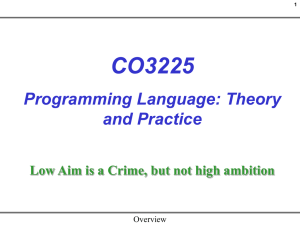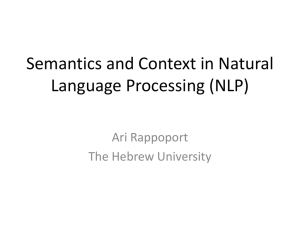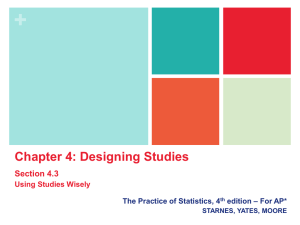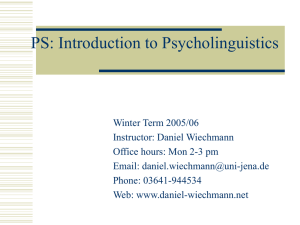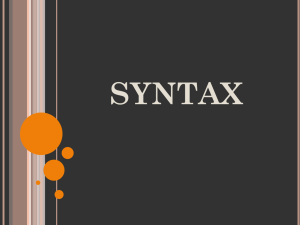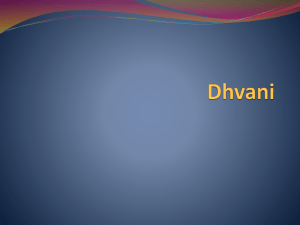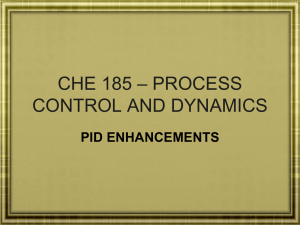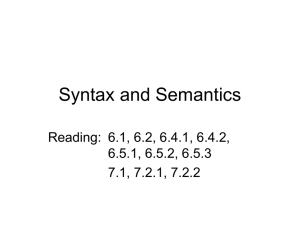Prolog Lecture 2
advertisement
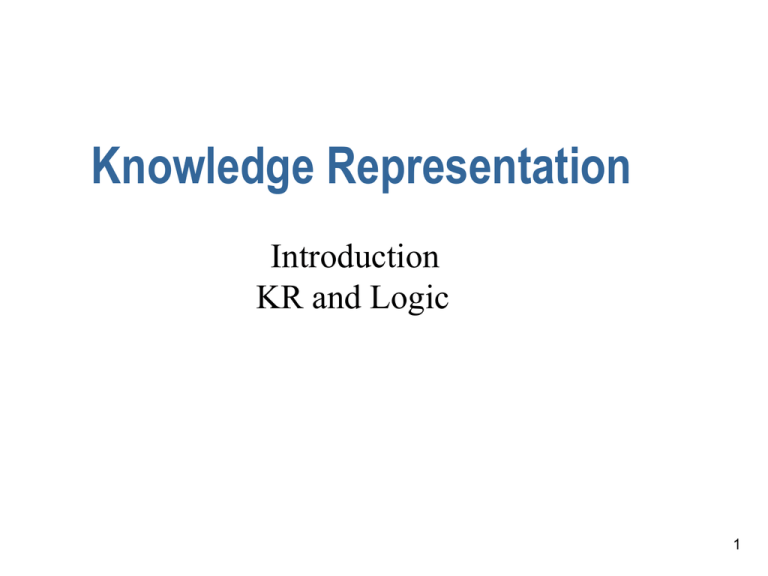
Knowledge Representation Introduction KR and Logic 1 Introduction Assumption of (traditional) AI work is that: • Knowledge may be represented as “symbol structures” (essentially, complex data structures) representing bits of knowledge (objects, concepts, facts, rules, strategies..). • E.g., “red” represents color red. • “car1” represents my car. • red(car1) represents fact that my car is red. • Intelligent behavior can be achieved through manipulation of symbol structures 2 Knowledge representation languages • Knowledge representation languages have been designed to facilitate this. • Rather than use general C++/Java data structures, use special purpose formalisms. • A KR language should allow you to: • represent adequately the knowledge you need for your problem (representational adequacy) • do it in a clear, precise and “natural” way. • allow you to reason on that knowledge, drawing new conclusions. 3 Representational adequacy • Consider the following facts: • John believes no-one likes sprouts. • Most children believe in Santa. • John will have to finish his assignment before he can start working on his project. • Can all be represented as a string! But hard then to manipulate and draw conclusions. • How do we represent these formally in a way that can be manipulated in a computer program? • Some notations/languages only allow you to represent certain things. • Time, beliefs, uncertainty, all hard to represent. 4 Well-defined syntax/semantics • Knowledge representation languages should have precise syntax and semantics. • You must know exactly what an expression means in terms of objects in the real world. Real World Real World Map to KR language Representation of facts in World Computer Inference Map back to real world New conclusions Computer 5 Well defined syntax/semantics • Suppose we have decided that “red1” refers to a dark red color, “car1” is my car, car2 is another.. • Syntax of language will tell you which of following is legal: red1(car1), red1 car1, car1(red1), red1(car1 & car2)? • Semantics of language tells you exactly what an expression means - e.g., Pred(Arg) means that the property referred to by Pred applies to the object referred to by Arg. E.g., property “dark red” applies to my car. 6 A natural representation scheme? • Also helpful if our representation scheme is quite intuitive and natural for human readers! • Could represent the fact that my car is red using the notation: • “xyzzy ! Zing” • where xyzzy refers to redness, Zing refers to by car, and ! used in some way to assign properties. • But this wouldn’t be very helpful.. 7 Inferential Adequacy • Representing knowledge not very interesting unless you can use it to make inferences: • Draw new conclusions from existing facts. • “If its raining John never goes out” + “It’s raining today” so.. • Come up with solutions to complex problems, using the represented knowledge. • Inferential adequacy refers to how easy it is to draw inferences using represented knowledge. • Representing everything as natural language strings has good representational adequacy and naturalness, but very poor inferential adequacy. 8 Inferential Efficiency • You may be able, in principle, to make complex deductions given knowledge represented in a sophisticated language. • But it may be just too inefficient. • Generally the more complex the possible deductions, the less efficient will be the reasoner. • Need representation and inference system sufficient for the task, without being hopelessly inefficient. 9 Requirements for KR language: Summary • • • • • Representational Adequacy Clear syntax/semantics Inferential adequacy Inferential efficiency Naturalness In practice no one language is perfect, and different languages are suitable for different problems. 10 Main KR Approaches • Logic • Frames/Semantic Networks/Objects • Rule-based systems 11 Logic as a Knowledge Representation Language • A Logic is a formal language, with precisely defined syntax and semantics, which supports sound inference. Independent of domain of application. • Different logics exist, which allow you to represent different kinds of things, and which allow more or less efficient inference. • propositional logic, predicate logic, temporal logic, modal logic, description logic.. • But representing some things in logic may not be very natural, and inferences may not be efficient. More specialized languages may be better.. 12 Propositional logic • In general a logic is defined by • syntax: what expressions are allowed in the language. • Semantics: what they mean, in terms of a mapping to real world • proof theory: how we can draw new conclusions from existing statements in the logic. • Propositional logic is the simplest.. 13 Propositional Logic: Syntax • Symbols (e.g., letters, words) are used to represent facts about the world, e.g., • “P” represents the fact “Andrew likes chocolate” • “Q” represents the fact “Andrew has chocolate” • These are called atomic propositions • Logical connectives are used to represent and: , or: , if-then: , not: . • Statements or sentences in the language are constructed from atomic propositions and logical connectives. • P Q “Andrew likes chocolate and he doesn’t have any.” • P Q “If Andrew likes chocolate then Andrew has chocolate” 14 Propositional Logic: Semantics • What does it all mean? • Sentences in propositional logic tell you about what is true or false. • P Q means that both P and Q are true. • P Q means that either P or Q is true (or both) • P Q means that if P is true, so is Q. • This is all formally defined using truth tables. XY XvY TT T TF T FT T FF F We now know exactly what is meant in terms of the truth of the elementary propositions when we get a sentence in the language (e.g., P => Q v R). 15 Proof Theory • How do we draw new conclusions from existing supplied facts? • We can define inference rules, which are guaranteed to give true conclusions given true premises. • For propositional logic useful one is modus ponens: A, A B ————————— B • If A is true and A=> B is true, then conclude B is true. 16 Proof Theory and Inference • So, let P mean “It is raining”, Q mean “I carry my umbrella”. • If we know that P is true, and P => Q is true.. • We can conclude that Q is true. • Note that certain expressions are equivalent • think about P => Q and P v Q. 17 More complex rules of inference • Other rules of inference can be used, e.g.,: A v B, B v C ——————————————— AvC • This is essentially the resolution rule of inference, used in Prolog. • Consider: • What can we conclude? sunny v raining raining v umbrella 18 Proof • Suppose we want to try and prove that a certain proposition is true, given some sentences that are true. • It turns out that the resolution rule is sufficient to do this. • We put all the sentences into a standard or “normal” form (replacing A => B with A v B) • There is then a standard procedure that lets you determine if the proposition in question is true. 19 Summary • Intelligent systems require that we have • Knowledge formally represented • New inferences/conclusions possible. • Formal languages have been developed to support knowledge representation. • One important one is the use of logic - very general purpose way to formally represent truths about the world, and draw sound conclusions from these. 20

